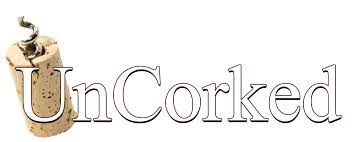The week before Thanksgiving is typically when most wineries premiere their prior year yield. Just like any retailer, each vineyard is hoping to attract consumers in a holiday buying mood. Wine club members are invited to partake in special luncheon food and wine pairings, tasting rooms are crammed with wine enthusiasts, and traffic is heavy on the twisting Willamette Valley roads. It’s the last chance to find the perfect compliment to Thanksgiving dinner and avoid even bigger crowds on Black Friday weekend. The weather was perfect – a “Five Peak” day with sunshine, picturesque fall leaves, and clear skies, as Hood, St. Helen’s, Rainier, Jefferson, and Adams loomed like holograms in the distance. It was the ideal day to do some unwinding and uncorking.
We’ll head back out to wine country again tomorrow for another Members-Only luncheon. We came home with another 8 bottles today, adding to our supply that fills our wine cooler, refrigerator shelves, and closets. Somehow we will manage to drink it all. The dogs rode along in the car and enjoyed their own tastings of country air and vineyard smells. We even treated them to a hot dog at the Cruise Inn on our way back into town. My wife and I were not expecting to still be hungry, but the lunch portions at our event were nothing but fancy appetizers. Our guests were also disappointed in the menu that we expected to be a feast considering the price of admission.
I spent the last two days helping my friends with their vineyard, “racking” the nectar from their 2018 harvest. We all went together and sampled some 2017 Pinot Noir blends today at some of our favorite winemakers after a full year of fermentation, but naturally found the more mature vintages to be superior. Some of the bottles that we bought will be stored for a couple of years on their sides before we pop any corks. Our “homemade” efforts do not quite compare in quality to these professional operations, but each year there is substantial improvement in flavor. My taste buds are not as sensitive as most, so the “earned” wine is much easier on the pocketbook. It’s also satisfying to experience the fruits of our labor.
My good friend, who dates back to high school, continues to invest in this hobby operation that keeps him busy in retirement. His wife, who manages the operation, has recently given up some of her responsibilities to watch their granddaughter. They both have a substantial investment in equipment and he just recently completed a degree in wine-making, so they’re hardheartedly committed to improving the Walleye brand. I probably drink about 10-15 percent of their annual production that amounts to about 30-40 bottles a year, and boast of being the leading consumer. In return, I usually contribute about 20 hours of labor every year spread out over 10 or so days, as well as 15-20 hours of travel time getting there and back. At Oregon minimum wage of $12/hour, that’s over $400 in sweat equity or the equivalent of slightly under $10 per bottle in payment. Well worth it for me! However, considering education costs, equipment investments, chemicals, and hundreds of hours in labor for both he and his wife, I would hate to think of what it costs them per bottle to enjoy this little hobby they’ve uncorked!

Leave a Reply